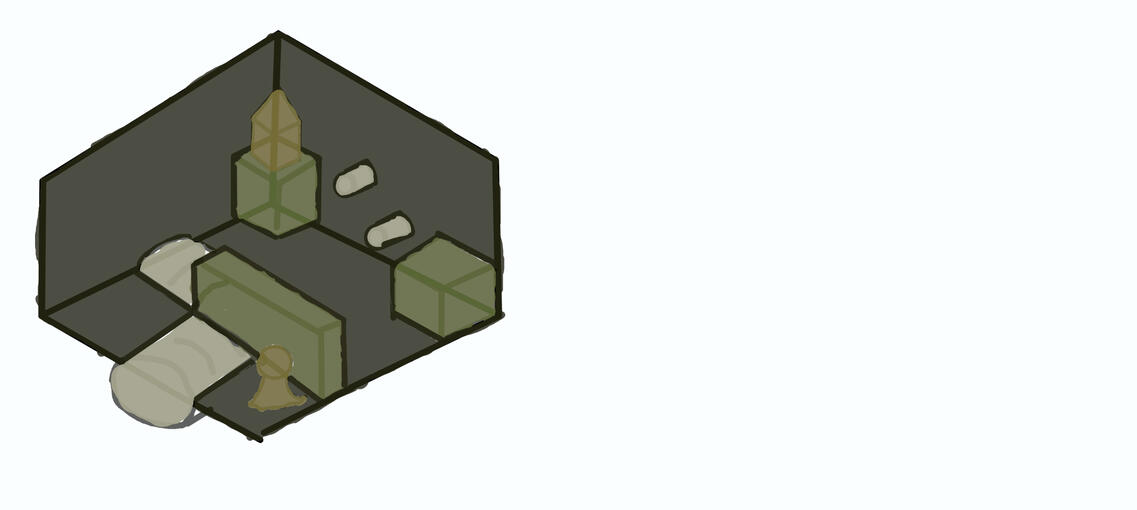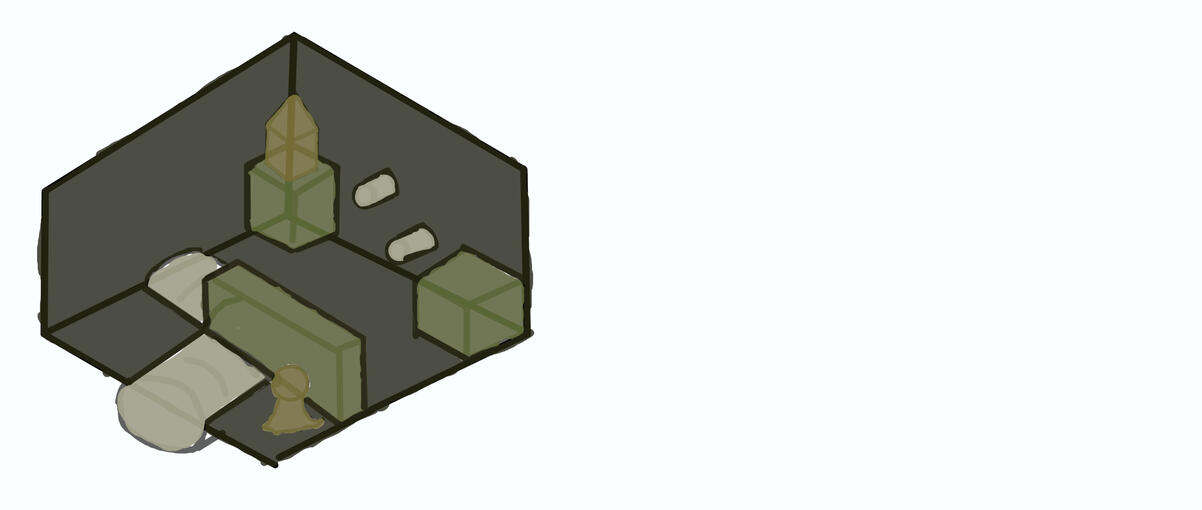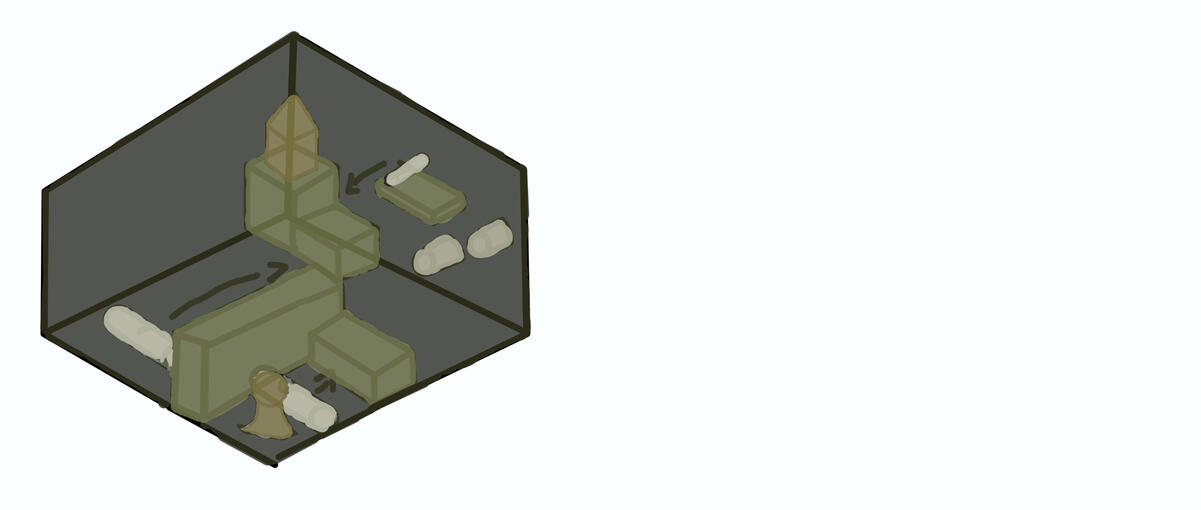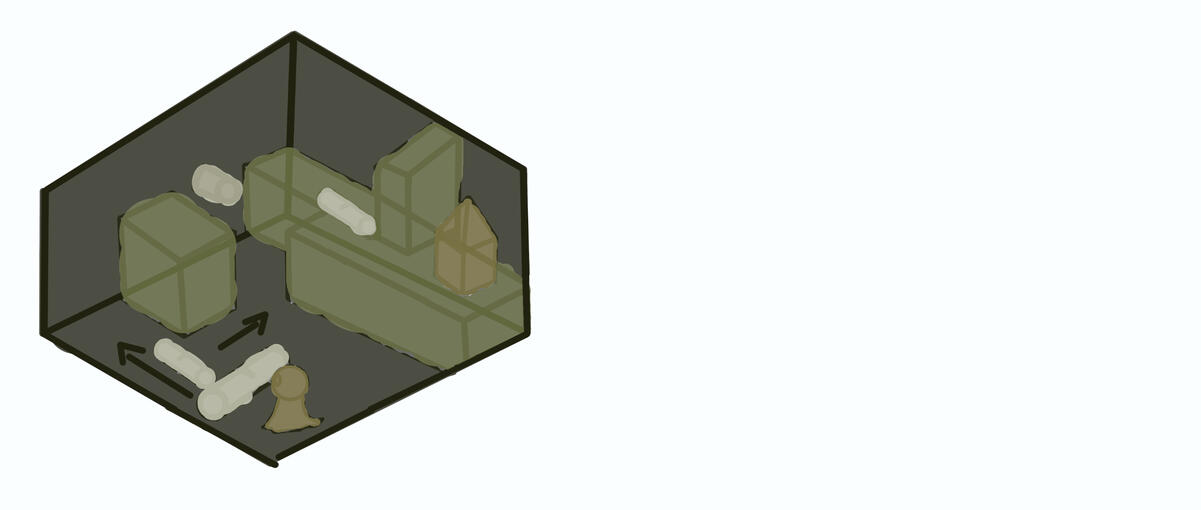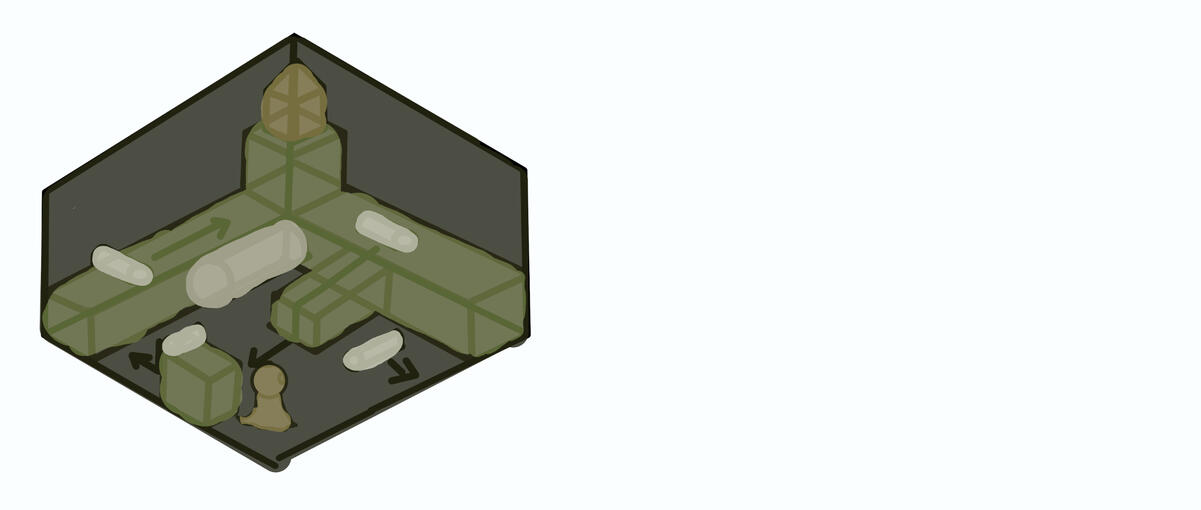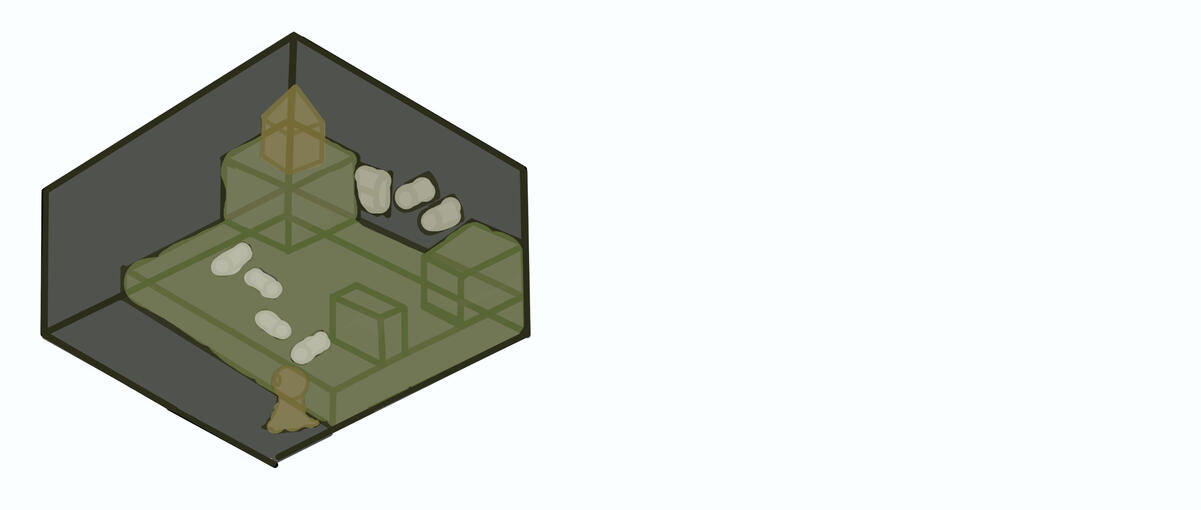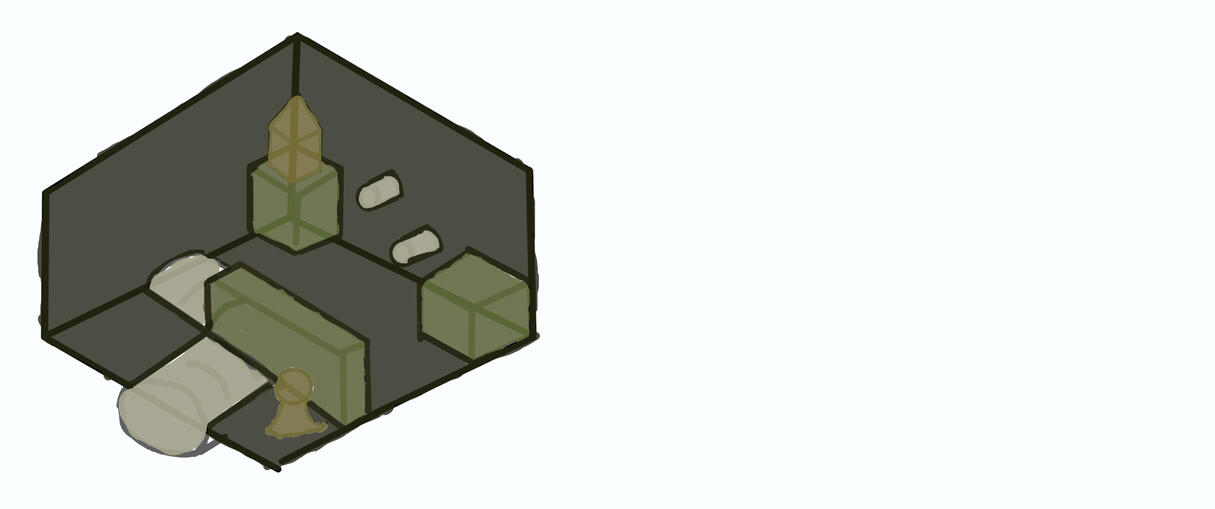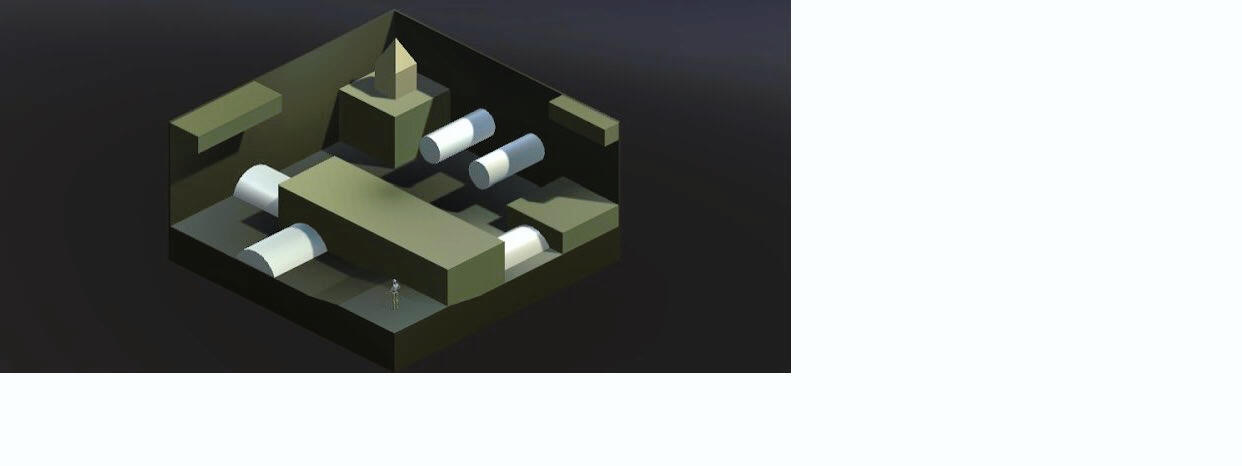Evan Solleveld
The Process Developing Lichen Roll 3D. How its Levels were made
Making a Level - Intial Concepts
Before we begin working on the all levels we need to set the groundwork for how the levels are presented. We need to know what we can do with a level. We start with initial concepts for ideas to center them around.
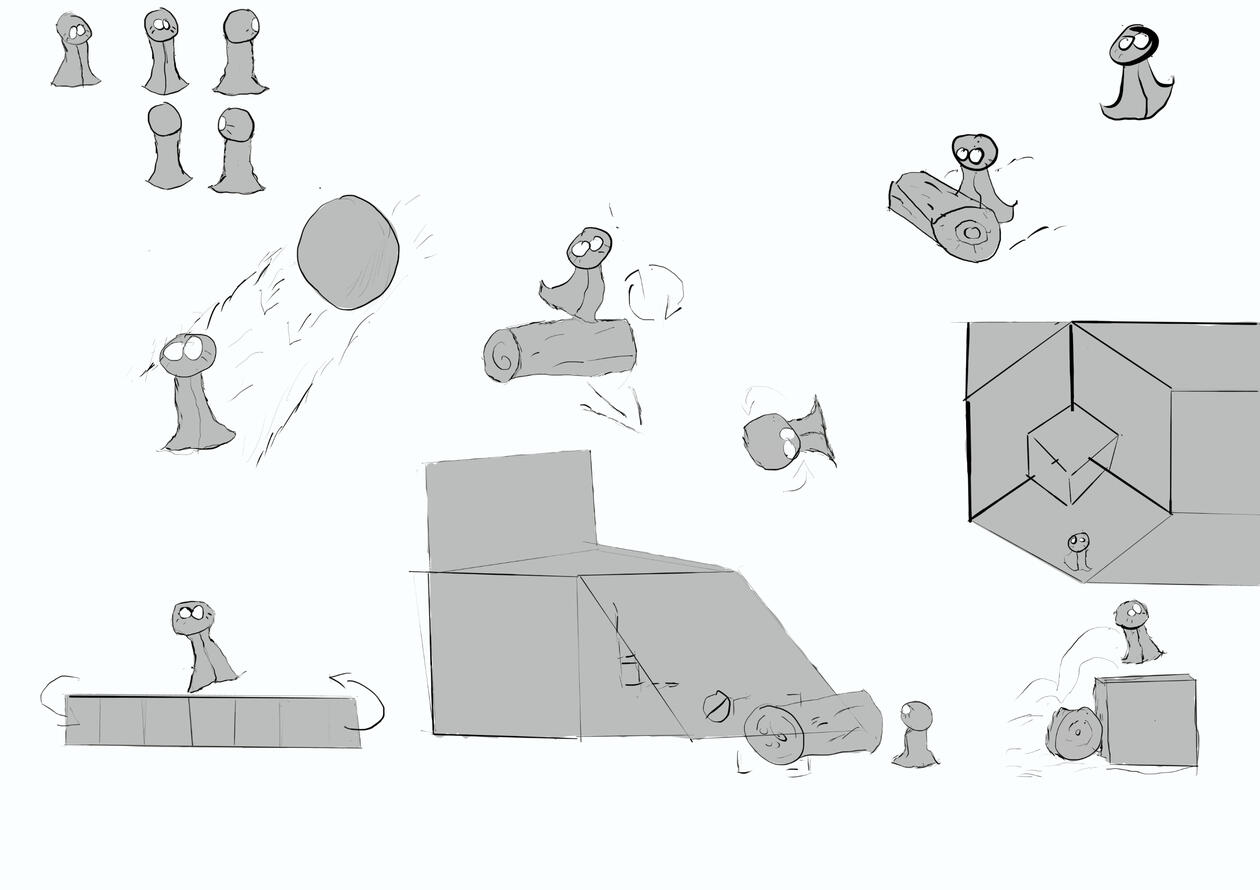
In most of these sketches the player is interacting with enviornment in a variety of ways. Most of which are have components of spinning around. Whether already moving or needing the player to interact with. Some of these cylinders pushed around and can be used to get higher ground. We can focus on more puzzle elements with this and can present the player with multiple mini challenges.
Making a Level - Camera Angle and Perspective
Now that we finished initial concepts with what the game can present in its newly found puzzle mechanics. We need to know how to present information to the player. I want the player to see all of their options at once. By presenting the whole level the player can go about their current obstacles and how to plan for those later on in the level.
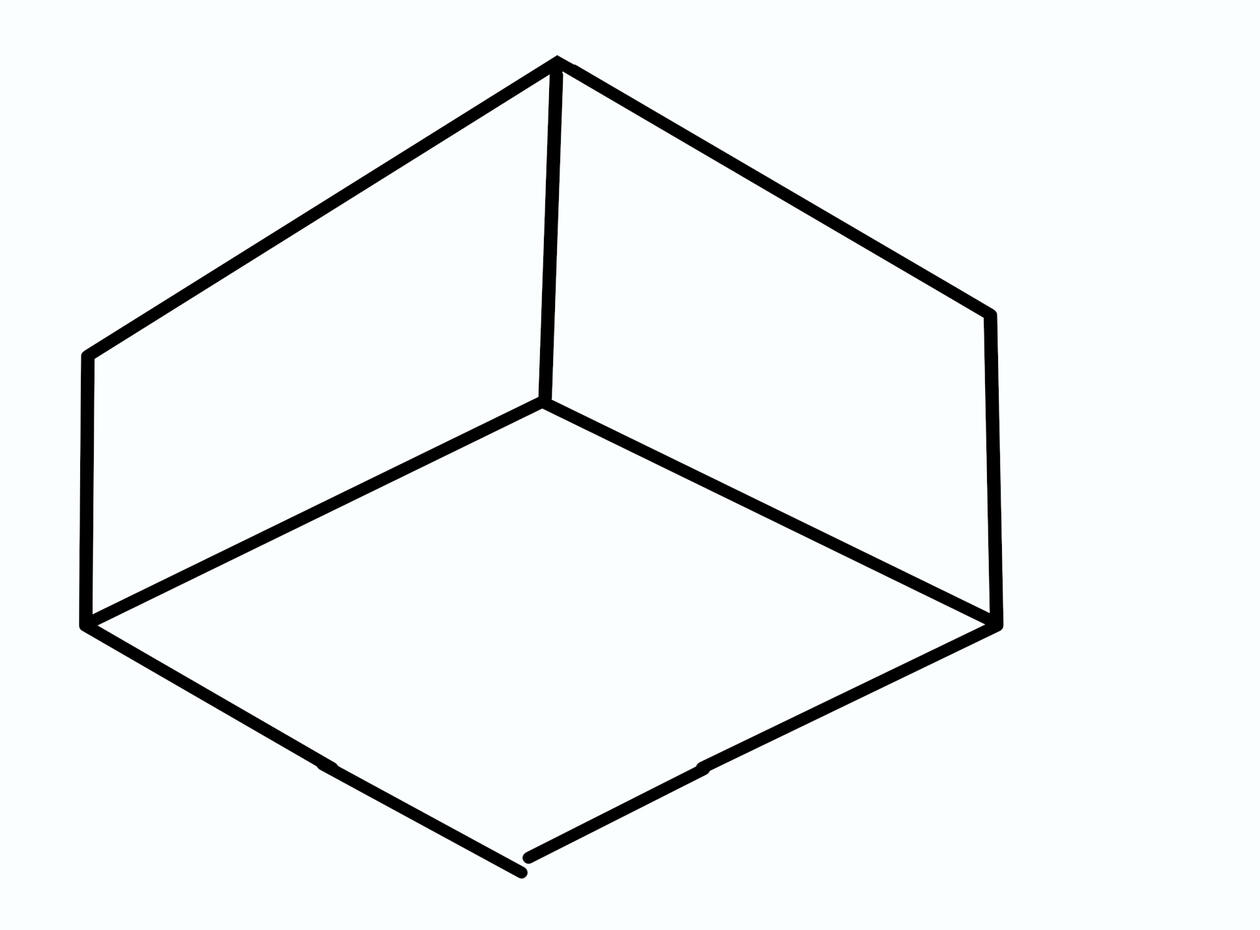
To do this we will use an Isometric View that way everything the Level has to offer is on display. It's all in one box where the camera is locked to one perspective. This is something to note as we don't want to hide an important object required to progress further. Stuff must be out in the open with the path to the end never being obstructed.
Making a Level - Level Design Process
Concepting out a Level requires 3 stages: 1. The Isometric Template. 2. Adding in Level Geometry. 3. Color Code each Object to identify it.
The Template is just the isometric box. Afterwards we put in place Level Geometry. This consists of walls, Rolling Objects, the Player Character and the Level Goal.
Making a Level - Concept and the Final
Stuff can of course not work as expect so through testing a bit of repositioning will help in tweaking it. Certain changes were also added in after the initial level was made. These extra cubes don't add anything gameplay wise and serve as a visual piece to make the level less empty and to give it a sense that there's more to it.
Making a Level - Teaching a Mechanic
To get the player familar with the game's mechanics we can use dedicate an entire level to teaching the player that mechanic. Introduce it in its most basic function. As the level progresses use it in a different form. Once they've familarized themselves give them once last challenge that uses it.
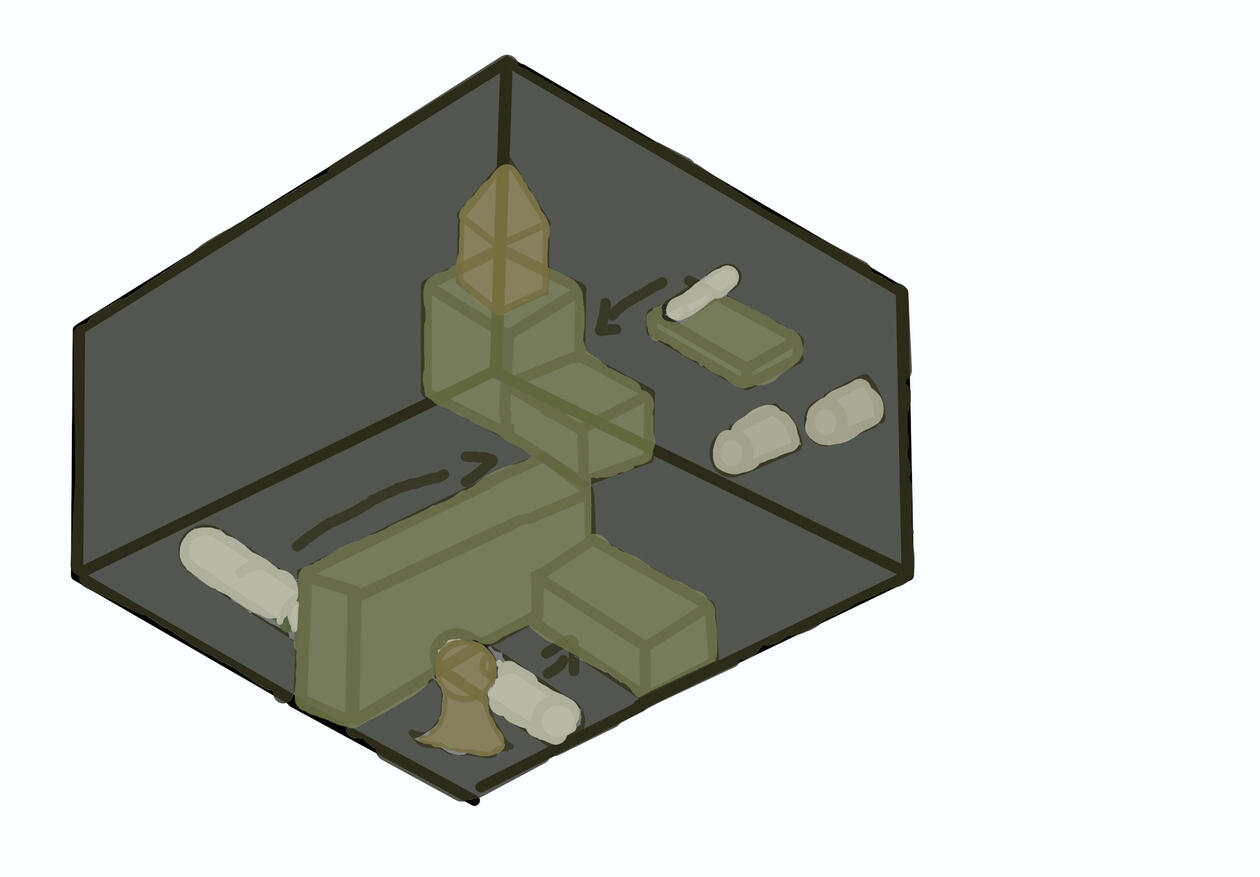
The example above shows the Player cramped in the corner. Our character on his own cannot jump high enough to reach the platform. But if they move the Cylinder forward they will soon realize it can be used as a platform extension to jump up. The next step will be to move two cylinders. to get to one you will need to do a little platforming to reach and push the cylinder. The next also just needs to be moved forward. Soon the player would've realized they made a staircase to platform up to the finish serving as a final challenge.
Making A Level - Expanding on a Mechanic
With each Mechanic because of their simple and basic design it is able to be used in a variety of ways. The question now becomes what more could we do with a specific feature. Now we take our feature and expand upon it.
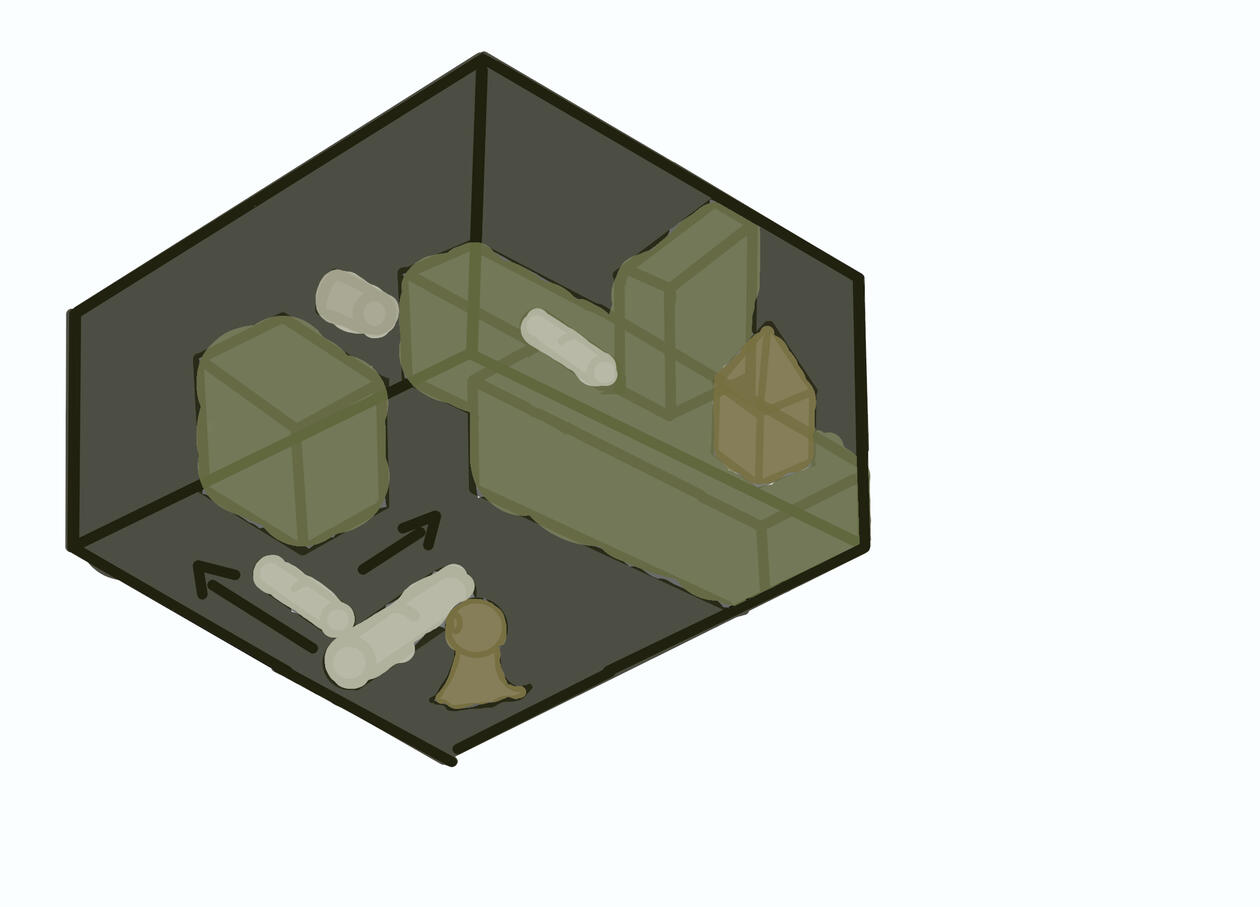
To make sure the Player understands their tools we can make sure of this by reintroducing it to them. Again they're tasked with moving a cylinder into a spot to reach a higher point. Where it's different is where you have move another cylinder out of the way first. This itself can be used later for more logic based puzzles.
Making a Level - Approach to Level Skips
We don't want the Player to break our levels, but we also kind of do. Beacuse of oversights it's possible the player can skip your level based off something you didn't account for.
We don't have to remove these skips outright. It might be more of a hassle trying to patch it out by throwing in walls visible or invisible making it not fun to collide with something you couldn't even see. Small section skips actually add more depth to the level as it encourages problem solving on the player's end. It gives more than one way to beat the level as it becomes more dynamic as a result.


